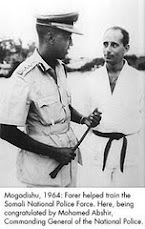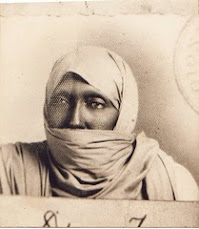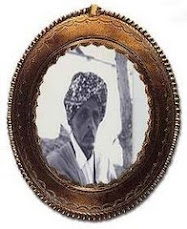
President Obama's senior national security team reviews counterterrorism policies at the White House in response to the attempted Christmas Day bombing of a passenger jet near Detroit, 5 January 2010
President Barack Obama acknowledged Tuesday that the United States has stepped up the fight against al-Qaida in Afghanistan and Pakistan, and has also begun focusing on other countries, including Yemen and Somalia.
President Obama's senior national security team reviews counterterrorism policies at the White House in response to the attempted Christmas Day bombing of a passenger jet near Detroit, 5 January 2010

Government (TFG).

CIA
“I don’t think that the amount of weapons that are going from Yemen through al-Qaida to al-Shabab is significant. Shabab has many other sources of weapons, both in the domestic market, and, remember, Somalia has one of the largest small weapons markets in Mogadishu itself,” he said.
claims of sending fighters to help al-Qaida resist Yemeni and foreign-assisted efforts to quash its insurgency, Professor Samatar says a Somali presence in Yemen is limited to longtime refugees who have lived in northern Yemen for decades, but not a significant infusion of terrorists or resistance fighters.“Containing refugees and others in particular localities I don’t think is going to be a significant element in tackling the terror matter,” he noted.As for Yemenis operating in Somalia, Samatar says the security threat is also low. But he does acknowledge that the stepped up fighting in Afghanistan and Pakistan have expanded the arena of doing battle with al-Qaida back to the Gulf region, where it was extremely active ten years ago.“The military pressures in Pakistan and Afghanistan are having a significant effect on al-Qaida’s ability to further decentralize itself so that they cannot be holed in one particular locality. And this is a fact that should be taken into account in both Somalia and in Yemen,” he observed.Does this mean a more intensified struggle in Somalia at this point? Samatar says not as far as expecting an infusion of fighters from Yemen to add to Somalia’s woes. He says al-Shabab continues to lead insurgents’ attempts to bring down the internationally endorsed TFG.

APIslamist al-Shabab fighters conduct military exercise in northern Mogadishu's Suqaholaha neighborhood, 01 Jan 2010 al-shabaab Terrorist radical Islamic group . This year's Terrorist Parade
I think Shabab controls much of southern Somalia at the present, and in the last week or so, they have had military celebrations in Mogadishu itself, to show the caliber of their troops and the size of their troops. So they are already what they are, and they control what’s left of Somalia….small strips in south Mogadishu and a few other pockets. And I just don’t think further pressures are going to make any difference in those spots because those are where the African Union forces are, and I don’t think al-Shabab will have the wherewithal to confront them head-on,” he said.

Al-Shabab insurgents control much of southern Somalia, including the city of Kismayo.



.jpg)












No comments:
Post a Comment